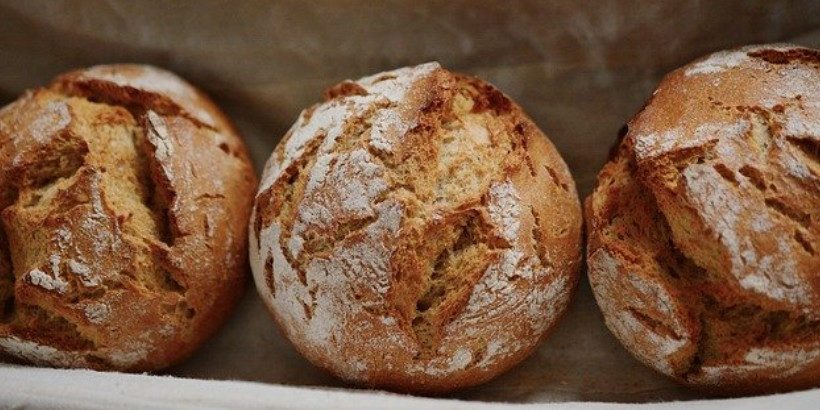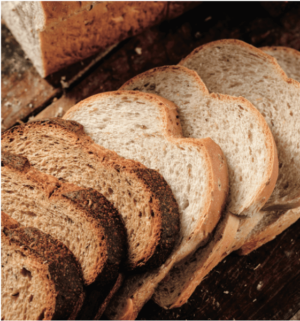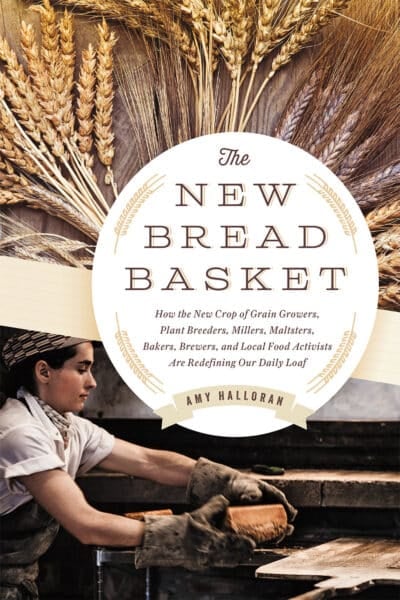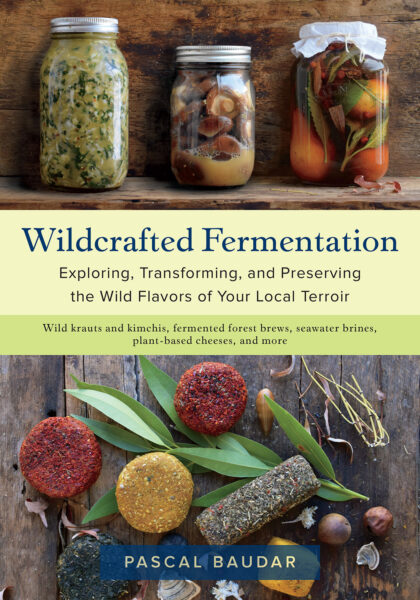Making Amazing Amazake Rye Bread

Ready to take your rye bread to the next level? Whether you’re in the mood for a piece of toast or an elaborate sandwich, this new twist on an age-old amazake bread is sure to satisfy your cravings!
Note: This recipe calls for koji. If you don’t know how to make it, check out our post on koji making!
The following is an excerpt from Koji Alchemy by Rich Shih and Jeremy Umansky. It has been adapted for the web.
How To Make Sour Amazake Rye Bread
Here are five simple steps to making amazake rye bread:
- Combine 1 part cooked starch, 1 part koji, and 4 parts water.
- Hold between 131°F (55°C) and 140°F (60°C) for 10 to 14 hours.
- Strain the amazake.
- Hold at ambient room temperatures exposed to air, stirring at least once a day, and ferment for up to a week.
- Store airtight under refrigeration.
What Is Amazake?
For many years rye bread in America has been found mainly in the form of Jewish rye. While many people enjoy this bread, ourselves included, it barely has any rye in it! Most of the Jewish rye that you find nowadays contains no more than 5 percent rye flour.
Deep, dark, richly delicious rye breads like those found in Ukraine, Scandinavia, and Germany are hard to come by. Thankfully there are more and more small-batch bakeries making rye breads that actually contain large amounts of rye.
Working With Rye
Rye is notoriously hard to work with, especially when your goal is to create a bread with a soft and pillowy crumb, as it is dense and heavy, and when used for bread can result in something with the texture of a hockey puck.
While this is a style of bread that many people enjoy, there are just as many who want something light and fluffy.
We’re not exactly sure why or how, but for some reason koji has the ability to lessen the density of a rye bread and allow you to create a light and fluffy bread even with a heavy ratio of rye.
As time goes on we hope to get this bread into the hands of a scientist who can fully analyze it and tell us exactly what’s going on.
RECIPE: Amazake Rye Bread
Until then we’ll keep making this rye bread that Jeremy developed for Larder, which uses 50 percent rye flour yet eats like the light and fluffy Jewish rye breads that most of us are accustomed to.
This bread uses the sour amazake from chapter 6 in its hydration, which serves to give the bread the pleasant tang that is found in many sourdough breads, without using a starter. At Larder this bread can more than stand up to the spicy mustard, sauerkraut, and bold pastrami in our signature sandwich.
It also makes for an excellent cracker when the loaf is sliced thin and baked until crisp. A personal favorite for us is to slather it with butter and cream cheese and then top it with caviar.
Ingredients
- 200 g water
- 200 g amazake
- 44 g molasses
- 3 g instant yeast
- 245 g rye flour
- 245 g high-gluten flour
- 8 g + 8 g wild carrot seed
- 8 g + 8 g caraway seed
- 8 g + 8 g mustard seed, equal parts yellow and brown
- 12 g + 8 g salt
- 8 g toasted yeast (for topping )
- 1 large egg
Procedure
- In a mixing bowl, mix the water, amazake, and molasses. In a separate bowl, combine the yeast, flours, and the first portion of the spices and salt.
- Gradually stir the dry ingredients into the wet using a dough whisk or spoon until the flour is well incorporated. Cover with plastic and let rest for 15 minutes. After about 15 minutes, mix again for a minute or two. Again let rest for 15 minutes and mix one more time as before. Now cover the bowl with plastic and let sit at room temperature for roughly 12 to 14 hours.
- After the long proof, stretch and fold the dough and shape it into boule or batard (round or torpedo) shapes for baking. Cover again with plastic and let rest for 15 minutes before putting in a proofing basket for the final rise. If you don’t have a proofing basket, line a bowl with a well-floured kitchen towel and put the dough in there for the final rise. The final rise should last somewhere between 1 and 1.5 hours. Keep the dough covered with plastic to prevent it from drying out.
- Preheat your oven to 350°F (176°C) half an hour before baking. Score the dough with a razor or sharp serrated knife. Beat the egg with water to make an egg wash. Mix the spices (second measurement) and yeast together and toast for a few minutes in a sauté pan over medium heat. Season the egg-washed dough with the toasted spices and yeast. Bake until the internal temp is about 200°F (93°C). Let cool completely before eating.
Recommended Reads
Recent Articles
Oh, honeysuckle…how we love thee. If only there was a way to capture the sweet essence of this plant so we could enjoy it more than just in passing. Luckily, foraging and some preparation can help make that happen! Here’s a springtime recipe that tastes exactly like honeysuckle smells. The following excerpt is from Forage,…
Read MoreIntroducing…your new favorite brunch dish! This whole broccoli frittata is packed with fresh, wildcrafted flavors that are bound to help you start your day off on the right foot. The following is an excerpt from The Forager Chef’s Book of Flora by Alan Bergo. It has been adapted for the web. RECIPE: Whole Broccoli Frittata…
Read MoreWondering where to forage for greens this spring? Look no further than hedges, which serve as natural havens for wild greens and herbs! The following is an excerpt from Hedgelands by Christopher Hart. It has been adapted for the web. Food from Hedges: Salads and Greens Let’s start by looking at all the wild foods…
Read MoreThere’s a whole new world out there when it comes to koji. It doesn’t matter if you’re making bread, cheese, or ice cream, koji helps you pump up the flavor! Growing Koji in Your Own Kitchen Koji, the microbe behind the delicious, umami flavors of soy sauce, miso, fermented bean sauce, and so many of…
Read MoreWhether you’re looking to replace your end-of-the-day cocktail, relax before bed, or want something new to add to your tea, this non-alcoholic mocktail syrup base will do the trick. Delicious and all-natural, take a sip of this nightcap mocktail and feel your troubles melt away. The following is an excerpt from Herbal Formularies for Health…
Read More










